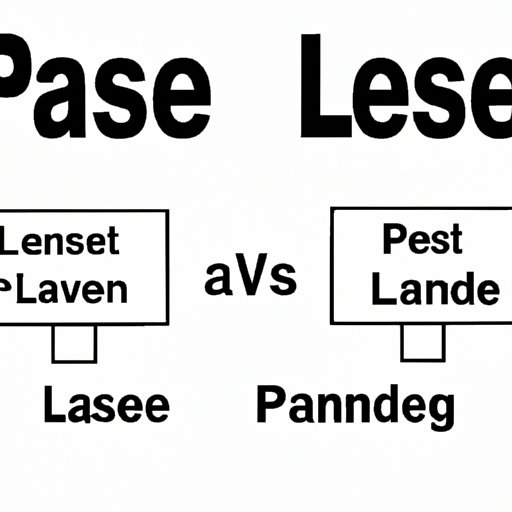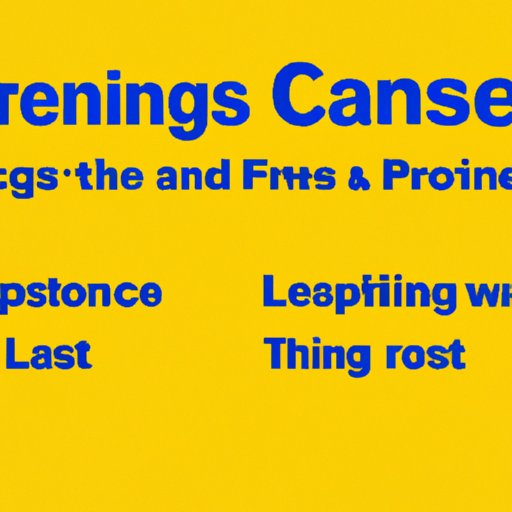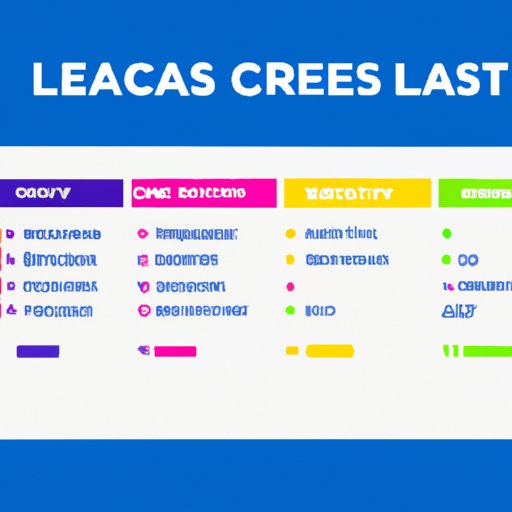Introduction
When it comes to acquiring vehicles or equipment for business use, there are two main options for consideration: lease or finance. While both offer the opportunity to obtain the asset, there are distinct differences between them that should be taken into account when making a decision. To help you understand the pros and cons of each option and the key differences between them, this article will explore the key points to consider.

An Overview of the Difference Between Lease and Finance
Before diving into the details, it’s important to understand the basic distinction between lease and finance. In a lease arrangement, the customer pays for the use of the asset over a predetermined period of time. At the end of the lease, the customer has no ownership of the asset and must return it to the lessor. With a financing agreement, the customer makes payments to purchase the asset and, upon completion of the payments, owns the asset outright.

A Comparison of the Pros and Cons of Leasing vs Financing
The first step in comparing lease and finance is to look at the advantages and disadvantages of each option. Generally speaking, leasing offers flexibility and lower costs while financing offers more control and ownership. Here’s a closer look at the pros and cons of each option.
Advantages of Leasing
The primary advantage of leasing is that it typically requires lower upfront costs than financing. This is because the customer is only paying for the use of the asset rather than the full purchase price. Additionally, leasing often allows businesses to acquire newer and higher-end assets than they could otherwise afford. Leasing also offers greater flexibility as the terms can be tailored to meet the customer’s needs, and the customer can often upgrade to a new asset after the lease term ends.
Disadvantages of Leasing
The primary disadvantage of leasing is that the customer does not own the asset at the end of the lease term. Additionally, the customer may be subject to early termination fees if they choose to end the lease early. Finally, some leases may carry mileage restrictions or other limitations on how the asset can be used.
Advantages of Financing
The primary advantage of financing is that the customer gains full ownership of the asset upon completion of the payments. This gives the customer more control over the asset and eliminates the need to return it at the end of the term. Additionally, financing often allows customers to obtain lower interest rates since they are taking out a loan rather than a lease.
Disadvantages of Financing
The primary disadvantage of financing is that it typically requires higher upfront costs than leasing. Additionally, financing generally has shorter terms than leasing, so customers may find themselves needing to refinance or upgrade sooner than they would with a lease. Finally, financing may require the customer to make a down payment, which can be a barrier to entry for some businesses.
Exploring the Tax Advantages of Leasing vs Financing
The tax treatment of lease and finance agreements can vary depending on the type of asset being acquired and the jurisdiction in which the transaction takes place. Generally speaking, however, leases are considered operating expenses and are therefore deductible in the year they are incurred. Financing, on the other hand, is usually treated as a capital expenditure and is deducted over the life of the asset.
Comparing Interest Rates for Lease vs Finance Deals
Interest rates for lease and finance deals can vary depending on a variety of factors. For lease deals, the rate is typically determined by the creditworthiness of the customer and the length of the lease term. For finance deals, the rate is typically based on the customer’s credit score, the amount of the loan, and the length of the loan term.
Examining the Benefits of Long-Term Leasing vs Short-Term Financing
The length of the lease or finance term can have a significant impact on the overall cost of the agreement. Long-term leases tend to be more expensive than short-term leases due to the increased risk associated with longer terms. However, long-term leases can also provide more flexibility and allow customers to upgrade their assets more frequently. On the other hand, short-term financing can provide more immediate savings but may require refinancing or upgrading sooner than with a long-term lease.
Analyzing the Impact of Residual Values on Leasing vs Financing
Residual value is a key factor to consider when comparing lease and finance agreements. The residual value is the estimated value of the asset at the end of the lease or finance term and is used to calculate the monthly payment. Generally speaking, leases have higher residual values than finance agreements, meaning the monthly payments are typically lower for leases than for finance agreements.

Understanding the Impact of Credit Scores on Leasing vs Financing
Credit score is another important factor to consider when comparing lease and finance agreements. Generally speaking, customers with higher credit scores will receive better terms on both leases and finance agreements. Those with lower credit scores may have difficulty obtaining a lease or finance agreement altogether.
Conclusion
Lease and finance agreements both offer businesses the opportunity to acquire vehicles or equipment for business use. Understanding the key differences between lease and finance is essential for making an informed decision. This article explored the pros and cons of each option, the tax advantages, the impact of interest rates, the benefits of long-term leasing vs short-term financing, the importance of residual values, and the impact of credit scores on the terms of the agreement. Taking the time to compare lease and finance agreements can help businesses make the best decision for their needs.
(Note: Is this article not meeting your expectations? Do you have knowledge or insights to share? Unlock new opportunities and expand your reach by joining our authors team. Click Registration to join us and share your expertise with our readers.)
